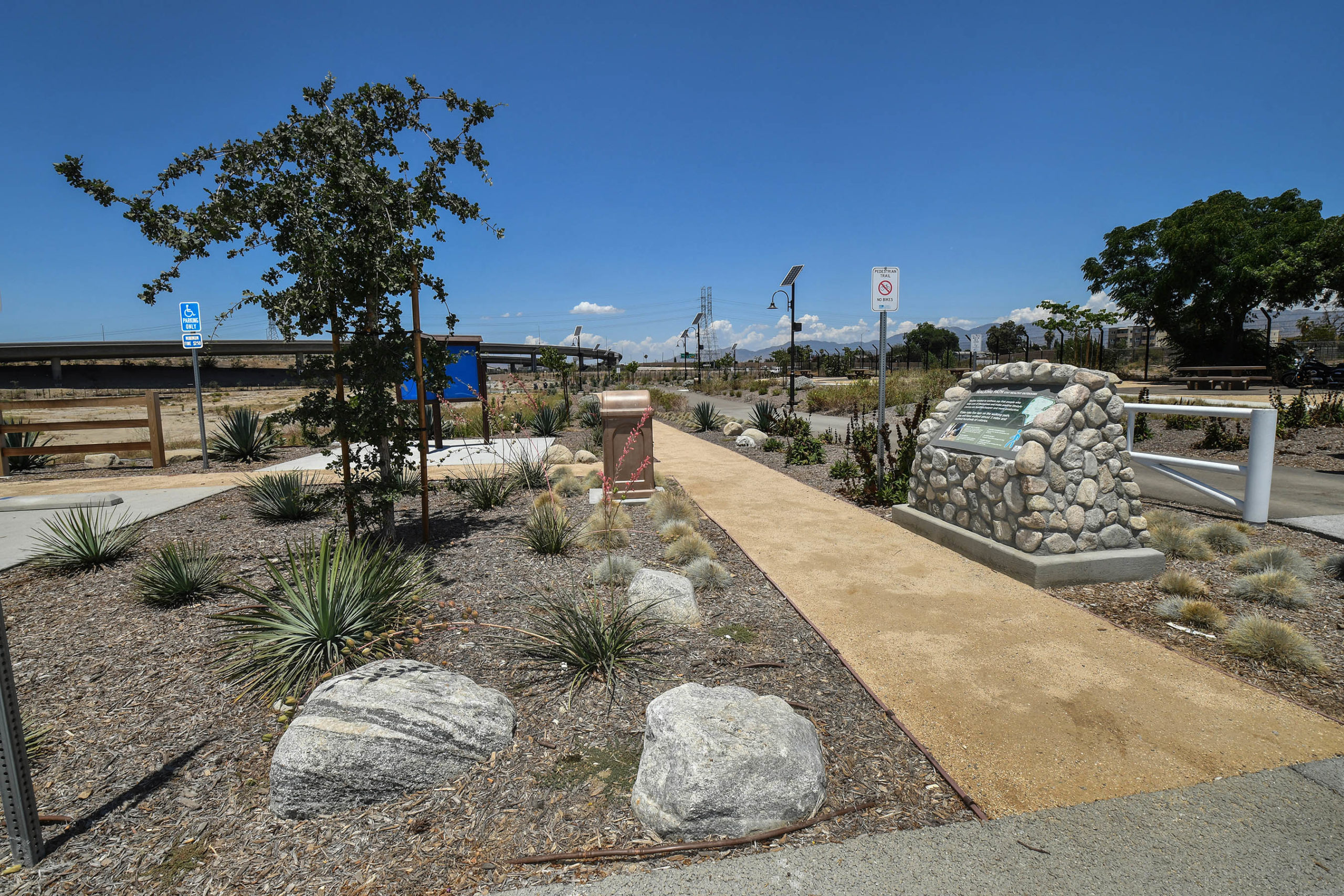Tujunga Spreading Grounds Enhancement Project Also Includes
Community Recreation Area
LOS ANGELES (June 30, 2022) – Los Angeles City Council President Nury Martinez and the Los Angeles Department of Water and Power (LADWP) marked the completion of the Tujunga Spreading Grounds Stormwater Capture expansion project and opened a new community recreation area onsite to the public.
LADWP collaborated with the Los Angeles County Flood Control District (LACFCD) on the 150-acre project to double the annual groundwater recharge capacity of the San Fernando Groundwater Basin to 16,000 acre-foot on average, which has the potential to provide enough water to 64,000 households on an annual basis. Expansion of this stormwater capture site was accomplished by reconfiguring the 20 original smaller water basins into nine wider and deeper basins.
This project was awarded a $3.2 million grant through Proposition 84’s Integrated Regional Water Management Plan, and a $7 million grant through Proposition 1’s Storm Water Grant Program. LACFCD also contributed $6.3 million towards the construction of the project.
“As LA continues to grow and our access to fresh water is at risk, it’s clear we have to improve our existing systems,” said Council President Nury Martinez. “Now these grounds have the potential to provide enough water to serve 64,000 households annually and this community has brand new walking trails, picnic tables, and outdoor classrooms. Projects like these are our City’s future – building in a way that battles climate change, prioritizes environmental justice, and improves the health and well-being of the surrounding community.”
In addition to expanding the groundwater recharge capacity, the overall storage capacity increased nearly eight-fold from 100 to 790 acre-feet when soil was removed from the site. With the installation of two new high flow intakes, LADWP was able to increase water flow rate into the facility from 250 to 450 cubic feet per second. These improvements make Tujunga Spreading Grounds more efficient and effective at capturing valuable stormwater runoff, allowing it to percolate into the San Fernando Valley Groundwater Basin.
For thousands of years, rainwater has percolated through the soils in the San Fernando Valley and into the aquifer that serves as an enormous reservoir where water is stored for future use. In order to keep our local water supply sustainable, spreading grounds are used to refill the groundwater basin.
“During this historic drought we want our customers to know that we are taking action locally to expand our local drinking water supplies and capture more rainfall to store in our local aquifer. The Tujunga Spreading Grounds expansion project diverts water that would otherwise flow out to the ocean and allows us to capture it and use it for our customers,” said Cynthia McClain-Hill, President of the Board of Water and Power Commissioners. “We also worked with the community to reduce noise and pollution impacts from the project and created a beautiful open space where northeast Valley residents can exercise and spend time outdoors.”
Ordinarily, removing soil from the site to complete the expansion project would have required thousands of truck trips. In response to community concerns and to be more environmentally sensitive to the surrounding neighbors, LADWP used a quiet, zero-emission electric conveyor system to transport soils offsite.
The renovated and expanded Tujunga Spreading Grounds features a community space that includes a walking path, sitting areas, an outdoor classroom and a hydration station.
“We’ve been talking a lot about the drought recently, but the Department has been looking ahead and working on solutions for years including the Tujunga Spreading Grounds Enhancement Project. We know projects like this have a big payoff in terms of stepping up our city’s local water supply reliability and sustainability to reduce our reliance on imported, purchased water,” said Martin Adams, LADWP General Manager and Chief Engineer. “We are grateful for the support we received from Council President Nury Martinez and for our partnerships with the LA County Flood Control District, California Department of Water Resources and the California State Water Resources Control Board which were critical to the success of this project.”
Now that the expansion project is complete, stormwater flows from two upstream watersheds, through the Tujunga Wash and the Pacoima Diversion Channel, and is diverted into the spreading grounds. The diversion structure improvements include two new inflatable rubber dams and two new intakes, one along the Tujunga Wash and the other downstream of the Pacoima Diversion Channel and Tujunga Wash juncture. Sandy soils at the spreading grounds naturally allow water to filter through and eventually recharge the groundwater basin. Pumping wells extract the water from the aquifer for treatment and subsequent use.
Currently, Los Angeles has the capacity to capture an average of 11 billion gallons (35,000 acre-feet) of stormwater each year at various spreading grounds, which can supply more than 140,000 households in Los Angeles on an annual basis. In addition to the Tujunga Spreading Grounds (Owned by LADWP and operated by LACFCD), LA County is home to four other large-scale facilities, all owned and operated by LACFCD – the Pacoima Spreading Grounds, the Hansen Spreading Grounds, the Lopez Spreading Grounds, and the Branford Spreading Basin.
The LADWP water system serves almost 4 million people through over 700-thousand service connections within the City of Los Angeles and portions of Malibu, Kagel Canyon, West Hollywood, Culver City, and Universal City.
More information on the Tujunga Spreading Grounds Enhancement Project can be found at www.ladwp.com/TSG.
###




